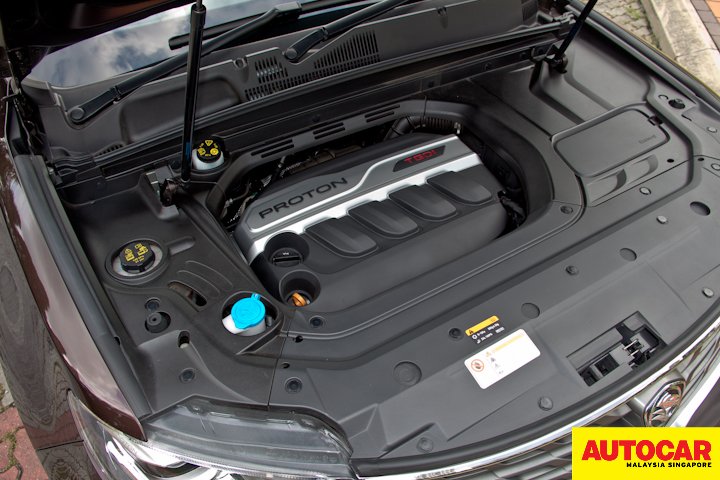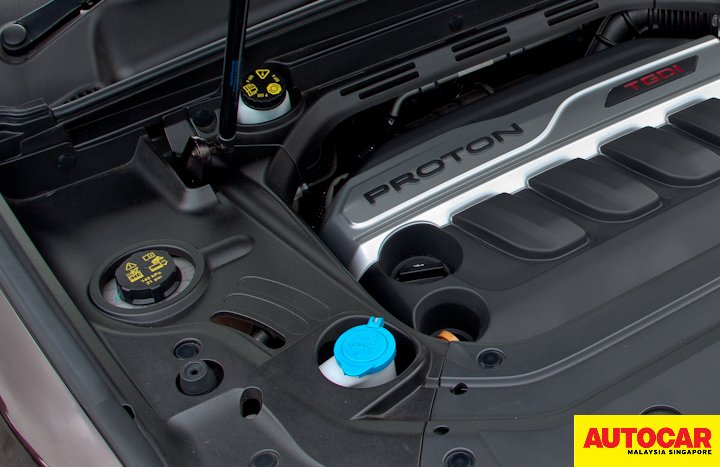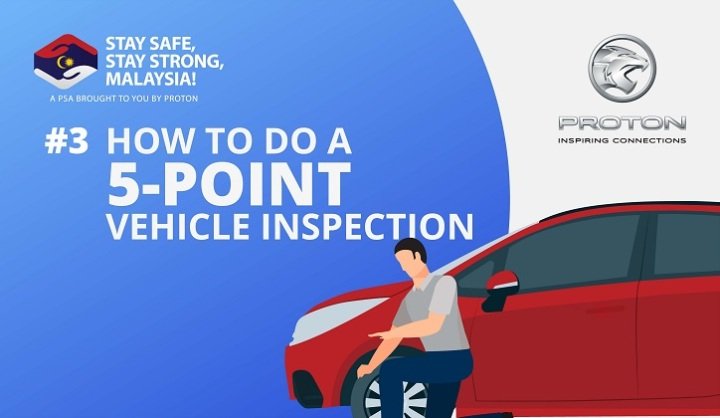
Here are five simple and quick vehicle maintenance tips to follow when inspecting your car during the MCO (Or Circuit Breaker) period.
Here are five simple vehicle maintenance tips to follow when checking your car. Why is it important to look at these five vehicle maintenance tips? Especially during Movement Control Order (MCO) or Circuit Breaker (CB), our cars don’t see its frequent usage than it used to.
It goes without saying that keeping our selves more than an arm’s length will become the new norm. And especially for most of us who are working in offices with colleagues, working from home can be a life-changing experience for some. While for the few, it is just another Tuesday afternoon.
Typically, a Malaysian driver can travel an average of 2,348km monthly in their car, while the average Singaporean would do half of that with 1,083km. Regardless, with the car constantly on the move, it is a good thing because none of the car’s fluids and moving parts is stationary for a long time.

But on the contrary, with the MCO in place for more than two months already, it is not a very good thing for a car, especially when it is not driven at all within that period. Because, like our bodies, cars can suffer from being sedentary.
This means that the car’s battery will go flat, tyres will lose pressure and have flat spots, much of the engine’s lubrication will find their way back into the oil pan, and grease can find their way out of CV axle boots and ball bearings if their seal is worn. These five vehicle maintenance tips cover the most essential, yet accessible areas of a car an owner can have a closer look.
So, here are the five vehicle maintenance tips you can do with your car during MCO or CB through this simple five-point vehicle maintenance tips. And don’t worry, you’ll don’t need to have a lot of technical knowledge. All you need is this page loaded on your smartphone, your car’s owners’ manual, a pair of gloves and a torchlight.
1. Fluids

Vehicles including cars, bikes and trucks need fluids. Yes, petroleum and diesel fuels are essential, but that is not in our sights right now. The fluids we’re taking a closer look into include engine oil, coolant, brake fluid, power steering fluid (not necessary if your car has electronic power-assisted steering like in the Proton X70) and windshield washer fluid. These are just as necessary because they make things work and keep a vehicle’s functions in tune.
Engine oil
The first thing you can do is to check the engine oil level, but make sure that the engine is cold and not running. The first thing to do is to look for a bright coloured knob, ring or hook in orange, yellow, or black in older cars. This is where the dipstick is at. Pull the dipstick out, wipe any oil on it with a cloth or tissue paper. And then, put it back in and pull it back out for an accurate reading.
However, for sophisticated premium luxury cars, there is no dipstick to be found in the engine bay. But you can check the oil level through the car’s digital instrument cluster. Refer this to the car’s digital owner’s manual accessible through the infotainment system.
Coolant
The coolant in the car’s cooling system is there for one thing: it keeps the engine from overheating by transferring heat from the engine and is cooled down in the radiator and back into the engine. The coolant is stored in a white semi-translucent container, sometimes at the front, or at the back of the engine bay depending on make and model. You can visually check the coolant level here. To top it up back, you’ll need to use distilled water.
Brake fluid
Now comes the brake fluid. You can find it in a much smaller semi-translucent container. Typically, the brake fluid reservoir can be found at the back of the engine bay, on top of the brake system’s master cylinder. Here, you’ll see the cap with the “(O)” sign within an octagon on it, along with other messages that say to refer to the owner’s manual and “DOT 4”.
You can see the fluid level inside by looking at the ‘MAX’ and ‘MIN’ lines, or visually inspecting by removing the cap. Also, if the dashboard has a warning sign of the “(O)” with an exclamation mark inside of it, this means that the fluid is low.
Always refer back to your car’s owner’s manual if you’re not sure of which type of brake fluid to use. Typically, DOT 3 is recognisable by its deep red hue, while DOT 4 is clear with a yellow-ish tint. You can mix both DOT 3 and DOT 4, though it is not recommended to do so as DOT 4 has a higher boiling point than DOT 3. Furthermore, DOT 3 has a glycol base and DOT 4 has a borate ester base.
Whatever you do, do not mix DOT 3, DOT 4 and DOT 5.1 with DOT 5, as the latter is silicon base.
Also, when the brake fluid level is low, it is a clear indicator that your car’s brake pads are wearing thin.
Power steering fluid (Skip this step for cars with EPS)
These days, the hydraulic-assisted steering system is being phased out by the electric power-assisted steering system or EPS. However, hydraulic systems are still a feature found in smaller and more affordable cars.
To know if your car has one, just look around for a reservoir with a cap that says “Power Steering” or the steering wheel icon close to the engine. Some cars have a semi-transparent reservoir for you to easily check on the amount of steering fluid, whilst others have a dipstick installed inside the cap.
Some say you can use Automatic Transmission Fluid to top up the hydraulic power steering fluid. However, it is still better to refer to your car’s owner’s manual. It will clearly mention whether the car needs the standard power steering fluid or can run with ATF too.
Some models may require some specific types of hydraulic fluid. For instance, a Lexus LX470 will be fine with ATF but a BMW requires a special synthetic fluid called Pentosin CHF 11S.
Window washer fluid
Last but not least, there’s the windshield washer fluid. Make sure it’s topped up so your windscreen remains clean from dust and grime kicked up from vehicles in front of you.
2. Battery
The battery in the car plays a vital role in keeping the electrical components in the car functioning. This includes powering the radio, keeping the security system on standby, engaging the central locking system, and supports the car’s air conditioning system when the engine is running. While for some cars, the battery is also used for the engine’s start-stop function.
The battery is part of the car’s main electrical system besides the alternator which runs most of the car’s electricals and electronics. The most vehicle can remain idle is one month. If the alternator is not supplying charge back into the system for extended periods of time, the car’s security system and other functions which runs in the background will eventually drain the battery.
This is why it is important to start the engine regularly to ensure that the alternator recharges the battery. But since the hood is open, this is a good time to see if the battery is in good shape. Make sure that the battery’s clamps are snug, clean and free from corrosion.
Moreover, keep a lookout for a light blue build up. That’s corrosion on the terminals due to hydrogen gas being released from the acid in the battery. Use a hard brush, eye protection and gloves to clean them away. If you have heavy grease, use that to protect the terminals from future build-ups.
If the battery is a maintenance-free type, you can check the battery’s condition through the inspection window. If it is all green, then it is good. If it is white, then the battery needs charging. But if it is red, it is time to get it changed.
3. Lights

The next thing you need to check is the lights. Ensure the headlights, taillights, brake lights and turn signal lights are all working before you head out from home. A trick to checking the rear lights is to park close to a wall and using the rear-view mirrors to see if they work properly – or get a friend or spouse for the best assessment.
If any of your lights are dim, it could be an indication of a bulb reaching its end, so it’s best to get that bulb replaced at the nearest SC when the MCO is lifted.

However, if your car comes fitted with LED headlamps or Multibeam LED, or Laser lights, with the full LED rear combination lamp, don’t worry, these can last for a long time, but only repairable by an authorised service centre.
4. Tyres

Tyres are often the most underrated, underappreciated and overlooked part of a vehicle. In fact, tyres are the sole link from the vehicles’s engineering marvels to the road – even more, tyres can influence and change the way a vehicle behaves! And if you get to know them more intimately, especially the R&D that goes into them, you’ll know the thousand and one reasons why to opt for more established brands.
Without digressing into Alpha Centauri, make sure the tyres don’t have any cuts, tears or bulges. And if your car is sitting in one spot for more than a week, drive it forwards and backwards. And if there’s a petrol station nearby, take it there and fill the tyres back up. If not, do so while you’re out getting essential goods.

That said, each car will have different tyre sizes, therefore different tyre pressures. Do check the tyre pressure guide behind the driver’s door, driver side B-pillar, rear passenger door or the owner’s manual for the matching pressures to your car’s tyre size.
Another important thing to be aware of is your tyre’s treads. Every tyre is equipped with treadwear indicators between the centre grooves. Designed to help you monitor tread depth, these indicators are spaced evenly and positioned parallel to the grooves. If the tread is flushed with the indicators, it’s time to replace the tyre.
Bonus tip: If you have a young adult driving your car, do check the tyre’s shoulders for blisters or fine grains. And if you do spot those, then that’s a sign that your car has been overdriven.
5. Wiper blades
Last but not least, windshield wipers keep you safe on the road. Good windshield wipers should wipe water droplets and dust off from the windscreen in a single sweep. But, when there are streaks from water droplets being smeared from the wiper blade’s travel, then it is time to get them replaced.
Or, if they appear visually dull and feels hard and brittle to the touch, that’s also a clear cut indication that they have served their time. If you can’t get them replaced during MCO or CB, get them replaced after.
Also, other than lifting up the windshield wipers when parked under a hot sun, you can also gently wipe the blade with a damp paper towel to remove any loose dirt or oil to extend the life of the wiper blades.
Furthermore, you can use water repelling additives such as RainX to give you a much clearer view ahead. Although it is best to apply on the windscreen after changing with a new set of wipers.
With these 5-points have checked and everything is in order with none of the anomalies, then your car is still in good condition for now. For more useful tips and information on Proton’s products and services, visit Proton at https://www.proton.com/en/corporate/staysafe-staystrong-malaysia








